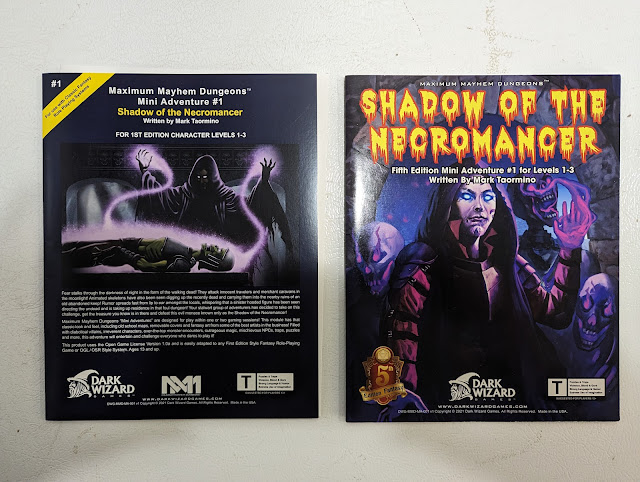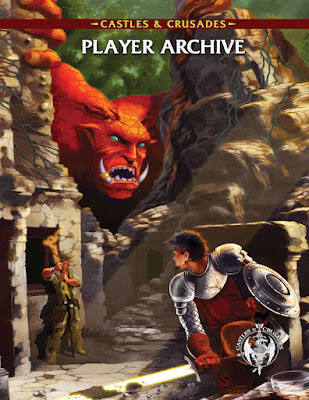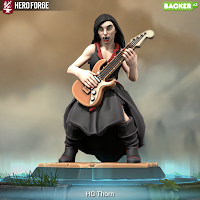 |
| The Love Potion by Evelyn De Morgan |
Thought a Class Struggles might in order today. I have been thinking a lot about the Alchemist lately and thinking that of all the potential classes, this the one Old-School AD&D/D&D talks around the most, but never actually executes. My history with the alchemist goes back to when I was creating a bunch of new classes. There was the witch (obviously), followed by the necromancer, the "sun priest" and finally the healer. The alchemist was one that I mentioned in conjunction with all these other classes, but never had much more than an outline of it.
So let's have a look at how the Alchemist has presented to us over the years and what the class has become today.
The Dragon Magazine Alchemist(s)
I want to start here since these are the first alchemists. The ones that even predate the information in the DMG.
To claim there is one alchemist from Dragon Magazine is a bit of a stretch. While a claim can be made for the Dragon Mag witch class, the alchemist has seen less cohesion.
The first alchemist we see, and one that predates AD&D, is the "
New D&D Character Class: The Alchemist" by Jon Pickens in Issue #2, page 28. This is a solidlyOD&D class. Here we get 20 levels of the alchemist class which functions as a slightly weaker version of the magic-user. It can create potions up to 6th level, like spells. This alchemist though has some special powers to go with it. It can detect and then later neutralize poisons and paralysis. It can identify potions and can prepare various poisons. The class is playable, but feels limited to a support role in some cases. The Prime Requisite is Wisdom, though I think Intelligence is a better choice.
A few more years in and we get a combo of classes for Roger and Georgia Moore in Dragon #45, "
NPCs For Hire: One who predicts... ...And One Who Seeks the Perfect Mix." This gives us two NPC classes, the Astrologer and the Alchemist. While the Astrologer looks like a lot fun, I want to focus on the alchemist now. This is a pure NPC; no class levels or XP, no hp, just what they do and how they do it. There is a bit on hiring an alchemist as well. The assumption here must be that these are all older professionals likely past their adventuring years. Fo me I can see both versions working at the same time in the same class. Pickens' class for adventuring years and the Moores' for after that.
Separate, these classes feel a bit lacking by my standards but are likely fine by others. Together though they combine rather nicely into a complete whole for me.
In "
Recipe For the Alchemist" (Dragon Mag Issue #49), Len Lakofka presents, in very typical Len fashion, a very complete alchemist class. Like many of his classes, this one is an NPC only and should be considered something of a more useful henchman. In addition to the powers of detecting and making potions and poisons there are skills on glass blowing and pottery making. Two useful skills for an alchemist to be sure.
There are XP per levels given, but they add up to be a little bit more than the magic-user if you consider the first couple levels are "apprentice" levels with little more than pottery making and glass blowing skills. While the class is very complete it is a bit prohibitive as a PC class. I am certain that is by design.
There is a bit of a stretch before we get to another one, but it is worth the wait. "
Better Living Through Alchemy" from Tom Armstrong in Dragon #130 has become in my mind the defacto article on alchemy in D&D. Armstrong gives us not only an alchemist class but also a primer on Alchemy and how it could work in the game. This is also the only alchemist I have played and playing the class though was hard. It had higher XP per level than the wizard and there was little they could do without their lab. The article is dense. That is in the sense that there is a lot here to read and unpack.
The article reads like a cleaned-up version of all the alchemists we have seen so far and this one also has the benefit of a few more years of play on it.
The Alchemist in the DMG and D&D Expert
In between all of those we get some notes on the alchemist from the Dungeon Master himself in the DMG. Though if anything this only makes me want to have an Alchemist NPC class, or better yet PC class, even more.
While the alchemist is not needed for higher-level magic-users, someone is going to need them. Plus someone out there is creating all those potions. If
Jonathan Becker's recent deep-dive into the Illusionist class is any indication we could have used a magic-user sub-class of an alchemist more than the illusionist!
The D&D Expert set also has guidelines for an alchemist and maybe the most iconic alchemist art there is in D&D.
For 1000 gp a month you can have an alchemist on hire. Likely less for that sketchy guy above.
So how do we get there? Well, let's see what the 3rd party publishers have to say.
Bard Games
I have gone on the record many, many times about my love of the books from Bard Games. Their Compleat Spellcaster is still a favorite and particularly germane to today's discussion is their
Compleat Alchemist.
While the Compleat Spellcaster is my favorite for obvious reasons, the Compleat Alchemist seems to be the most popular. There are two prints from Bard Games, the Arcanum (which combines all three) and then another one from Wizards of the Coast long before their D&D years.
This was one of the most complete (it says so in the title) alchemist classes for some time to come. At 48 pages the book was huge for a single class. By necessity, the class was written for "any FRPG" so a lot of the language is coded since they did not want to run afoul of TSR. But there is enough information here for you to read between the lines to figure out what to do.
Some time is given to the art and science of alchemy. This includes the use of special symbols and language to communicate with other alchemists. Prices and rarities of ingredients and equipment. And even a component sheet to keep track of the alchemist stores.
Potions and Elixers are granted by level as one would expect, only, in this case, it details what the alchemist can do at their class level. Not by let's say potion level (like a spell).
This alchemist really was the gold standard by which all other alchemists were to be judged for years. Enough so that it appeared in several different books by a few different publishers over the years. So much so that it still appears in the
Arcanum 30th Anniversary Edition from ZiLa Games.
The OGC / OSR Alchemists
Not to be left out modern authors have looked back to the Alchemist and created their own versions using the OGL.
Pathfinder
The evolution of the D&D game to Pathfinder has also given us an evolved alchemist class. This is presented as a fully playable PC class. It is also so popular that while it was originally a "Base Class" in Pathfinder 1st Editon, it became a Core Class in Pathfinder 2nd Edition and the favored class of Pathfinder goblins.
I rather enjoy this version of the class since it more playable than previous versions of the class. Good rationale is given as to why an alchemist would want to leave the lab and get out into the field of adventuring. The class though does tend to be a little too "blasty" for my tastes and it seems that the 2nd Edition version has gone even more in that direction, but it is still a very fun class to play.
There is so much alchemist stuff (over 300 according to DriveThruRPG) that there is even a product to collect all the OGC extracts into one place,
Echelon Reference Series: Alchemist Extracts Compiled.
Pathfinder is not the only place though to find a "new" alchemist. There are plenty of OSR/Old-school choices out there. Here are a few I have grabbed over the years. In no particular order.
The Alchemist
Tubby Tabby Press
This is certainly one of the more complete alchemist classes I have seen. At 81 pages it is full of information on all of the class details, equipment, ingredients and everything the alchemist can create by level. Designed for AD&D it can be ported over to any game. It is based on the Bard Games version. There is only a small amount of art in this one and no OGL statements. Despite that this is a very full book and plenty to keep players and GMs busy.
Basic Alchemist
Den Meister Games
This is a smaller product, but it is totally in line with the Basic-era games. What makes this particular product useful is its flexibility. Produced for Labyrinth Lord it is a solid B/X feeling class. The cover art even invokes the Erol Otus alchemist art from the D&D Expert book. The alchemist can build potions, elixirs, and compounds and use them as magic-user spells. Some examples are given and it has a great old-school feel. In particular, I love the alchemical failure table!
At six pages it is not big, but it makes each page count. I do wish there more examples of spells though.
Supplement #1: The Alchemist
Vigilance Press
This is another smaller product. Five pages (1 cover, 1.5 OGL, 3.5 content) at $0.99. It reminds me a bit of the Dragon magazine alchemists; Smaller XP per level needed, but only a few "powers" per level and some levels none at all. Slightly better hp and attacks set this off from other "magic-user" based alchemists. I do wish this one had more to it than this, but it is a playable class. If I were to use this one I might try it as a multi-classed Magic-User/Alchemist. Get the advantages of the magic-user spells and the better hp/attacks of the alchemist. Designed for OSRIC.
Old School Magic
Vigilance Press
This is an update to
The Alchemist also by Vigilance Press. For another buck, you get more classes, another 23 pages and a better-looking layout. A good deal if you ask me. The alchemist is very much like the one from the previous product. Like the alchemist supplement, I might do a multi-class with this alchemist. Either as an alchemist-artificer or an alchemist-sage.
The other classes include the artificer, conjurer, elementalist, hermit, holy man, naturalist, sage and seer. Plus there are some new spells that I rather like.
The OSR Chymist
Jeremy Reaban
A slightly different version of the alchemist. Jeremy Reaban does some great classes and this one is no exception. This chymist is closer in nature to the Pathfinder Alchemist but somehow this one feels more like an old-school class and manages to work well. He includes some new formulae for alchemists/chymists and some sample NPCs. Also there are tables for whatever old-school games you are playing. Sure conversion is easy, but this makes it all easier.
It is PWYW, but my advice is to send him a buck or more. It is 16 pages so that is not bad for a dollar.
There are more, including many alchemists that are parts of larger books like
Fantastic Wizardry,
The Crimson Pandect, and the previously mentioned
Arcanum.

































